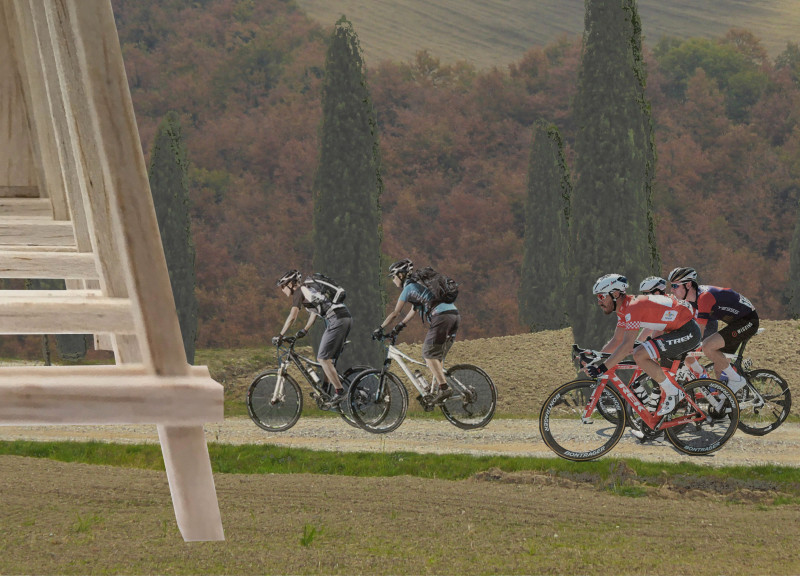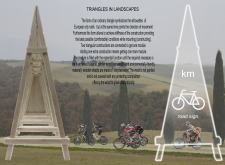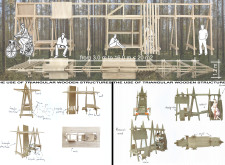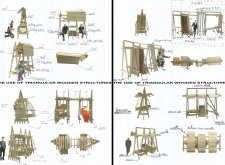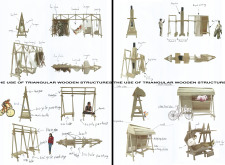5 key facts about this project
The overarching concept integrates the built environment seamlessly with the natural landscape, emphasizing both the visual and functional relationship between the two. This project serves as a model of sustainable architecture, utilizing conifer wood and recycled materials. Its modular approach not only accommodates the needs of users but also encourages a sense of community by providing shared spaces.
Functionality and Structural Innovation
The primary function of each triangular unit is to provide flexible living spaces that can adapt to diverse needs. The design includes specific features such as bicycle parking, multi-functional seating areas, and distinct modules for sleeping, cooking, and bathing. This multi-functionality is a key aspect of the design, promoting versatility in use and encouraging interaction among users.
Unique to this project is the design’s commitment to sustainability through the choice of materials. Both conifer wood and recycled wood are utilized, with untreated finishes allowing for natural aging and reinforcing the connection to the environment. The structural integrity offered by the triangular configuration enhances stability while reducing material waste.
Integration with the Natural Environment
The design significantly focuses on harmonizing with its geographical context. By employing triangular forms and organic shapes, the project resonates with the surrounding landscape, reinforcing the dialogue between architecture and nature. The strategic placement of the modules takes advantage of the natural light and views, optimizing the interior environment while connecting users to the surroundings.
What sets "Triangles in Landscapes" apart is its adaptive modular design ethos. The ability to expand or reconfigure the space as the requirements change is particularly relevant in contemporary urban scenarios where flexibility is paramount. The design addresses current trends in sustainable living by fostering a low-impact lifestyle, evidenced by its encouragement of cycling and community interaction.
For more details on the architectural plans, sections, designs, and ideas that comprise "Triangles in Landscapes," consider exploring the complete project presentation to gain in-depth insights into its innovative approach and functionality.


